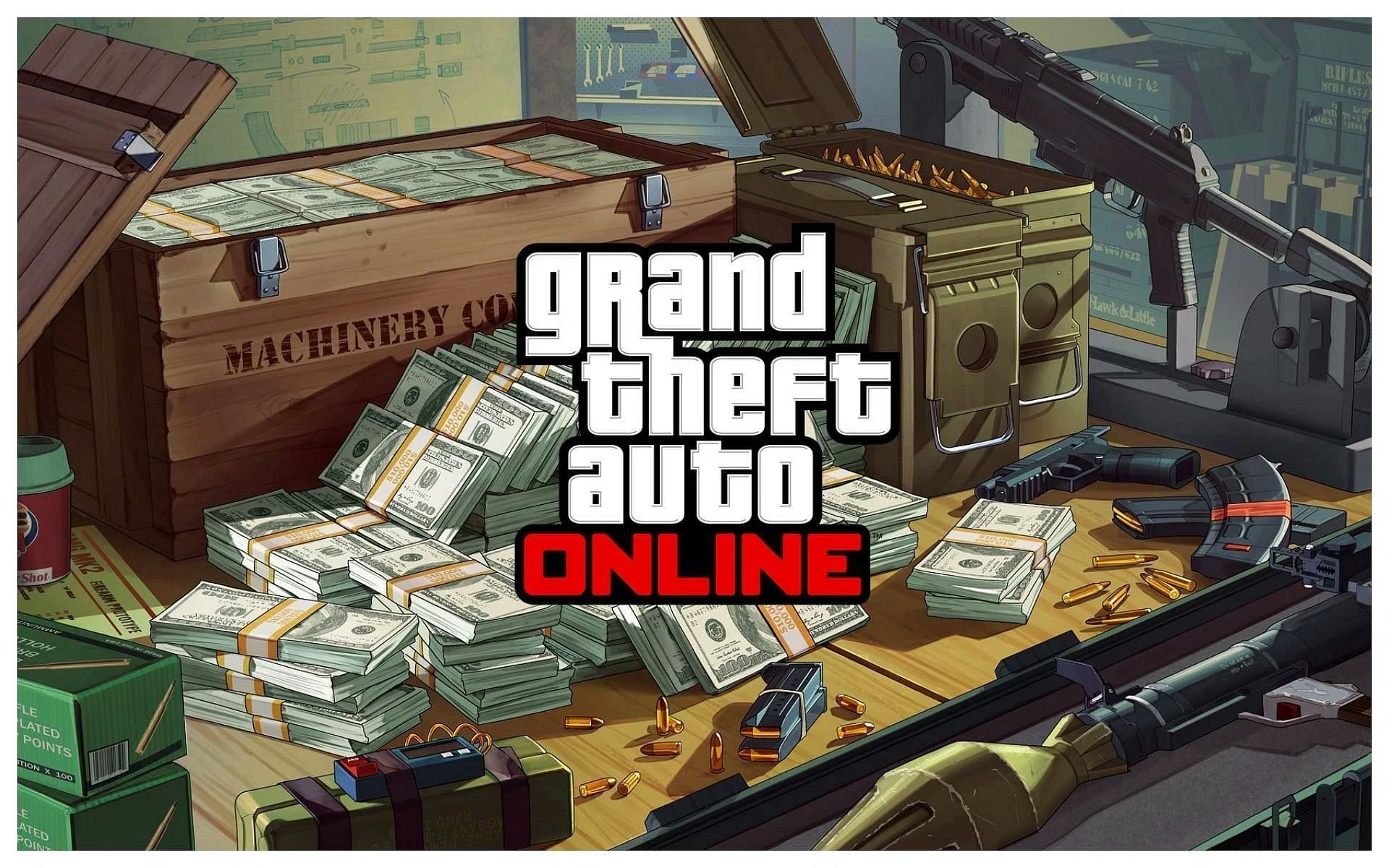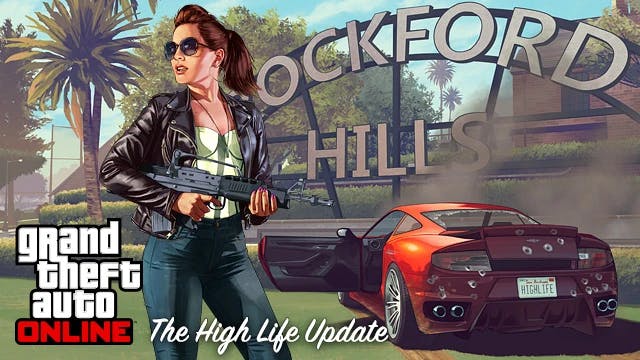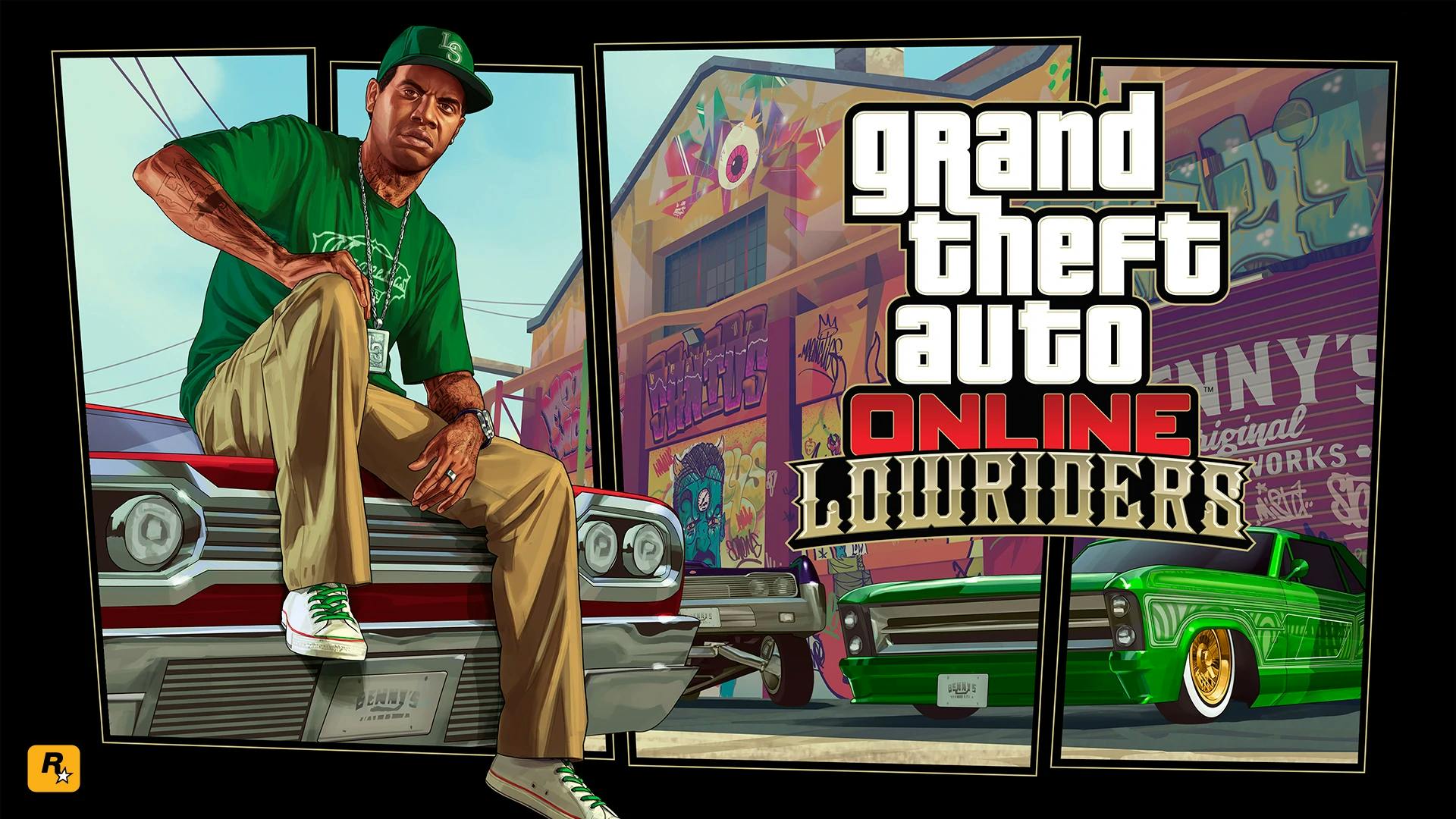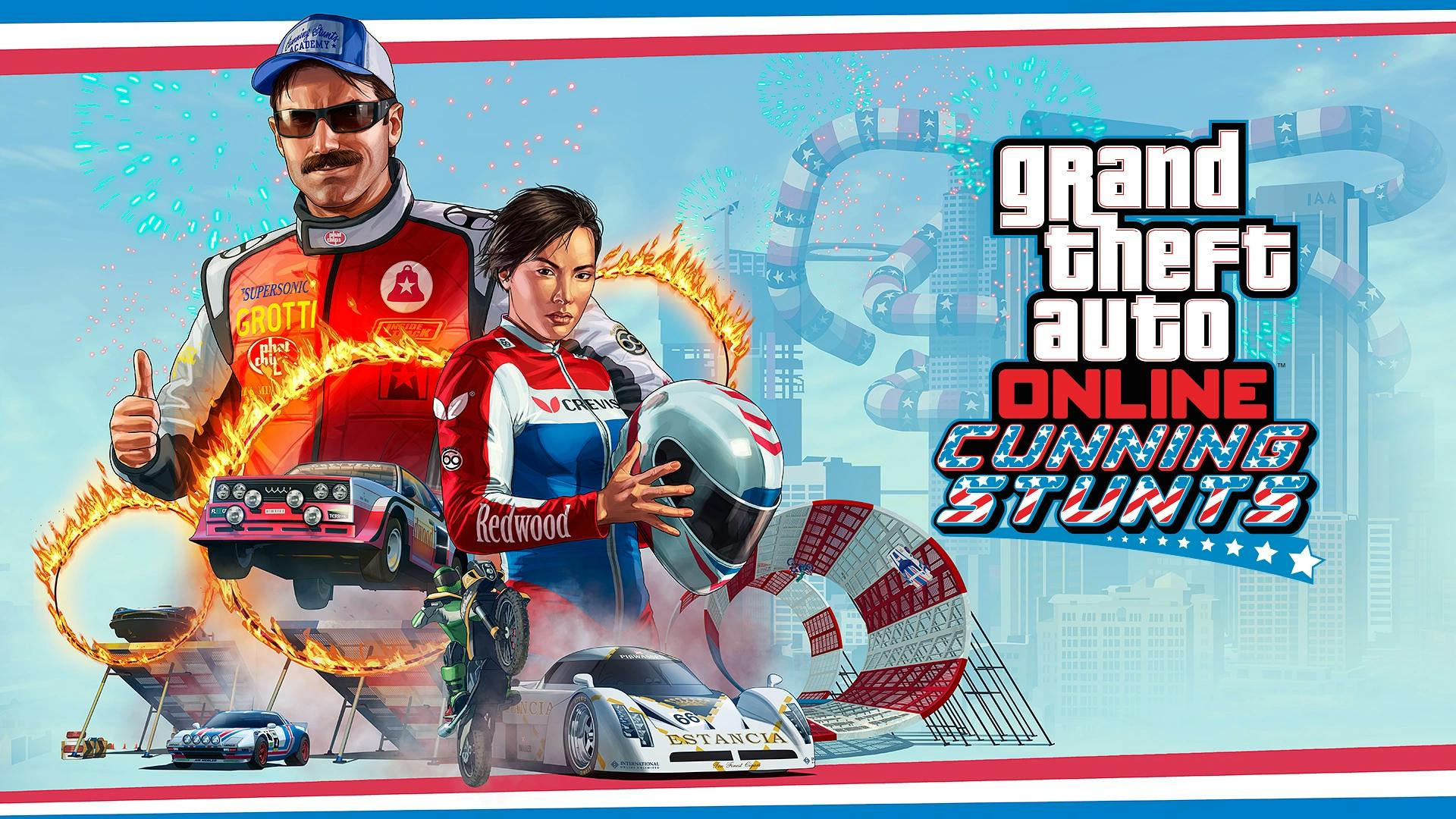GTA V: A decade of relevancy
For the last decade, Grand Theft Auto V has been one of the most ubiquitous gaming experiences out there. Its ever-relevant single-player campaign is a masterpiece in satire wrapped around instantly iconic characters. As a player you get completely engrossed in the growth of these, let’s face it, criminals. Yet you want to see them succeed and get the happy ending they deserve.
Outside of the narrative, GTA’s most iconic staple is the sandbox element and in that aspect, five doesn’t disappoint either. It was bigger, better, and more free than anything that came before it. The entire L.A area was lovingly (and partly spitefully) translated into game form with impeccable attention to detail. You can make your car explode, or shoot a random NPC and then drive by that exact location in real life.
Yet, ten years after its release, GTA 6’s trailer has only been released this year, with its actual release being even farther away. So, how has GTA V managed to stay so relevant over a decade despite little to no single-player content being added?
Okay, you probably already know the answer, but to those uninitiated, welcome to the world of GTA.

GTA Online
Rockstar had an idea: what if you take the massive playground of GTA’s Los Santos and make it an online lobby? You can go and steal cars with friends, then race with those cars against complete strangers. It’s a genius idea, especially with all the room for expansion. You just add a few missions, then give players a reason to earn money like buying cars and the gameplay loop runs itself.
But Rockstar had bigger ambitions than having a self-sustaining ecosystem, they knew what they could achieve with the right balance. They weren’t just about to make a money printing machine, they were making a money printing factory.
With the right amount of content updates being pushed, Online users had a nearly incompletable list of things to buy. Between cars, places to stay, guns, and outfits, you couldn’t earn enough to spend it. Players were incentivized to come back daily to grind out cash for that Zentorno they really wanted. Or, they could buy a Shark Card.

Shark Cards are the pay-to-win mechanic in GTA Online, you spend real USD you get fake USD. Here, the price range goes from €3.99 to get $250,000 in-game to €74.99 for $10,000,000. That’s a wide margin, both in terms of real spending and what you receive in the game. With the consequence of Rockstar being forced to balance their prices around these Shark Cards, if everything costs up to $1,000,000, there’d be no point in spending that much. Inversely, if everything costs $10,000,000 you’d quickly burn players out, and you’d be missing out on those impulsive buyers.
The principle of balancing player income and spending guided Rockstar throughout its future update schedule. By following that magic formula, GTA Online was transformed from a sandbox to a straight-up MMO-type experience. This can only be seen as the golden standard of “online” modes, both in terms of profitability and content. But how did they do it?
The update timeline
We’ll be taking a look at GTA Online’s updates, when they came out, and how they affected the game as a whole to try and better understand what has kept players engaged this whole time.
2013-2014: The foundation
During the first 2 years of GTA Online, most of the content added was there to expand on the foundations of the game mode. 2013 added a content creator to give players a way to make their own missions, a pillar of what kept the GTA community alive for years. Aside from the content creator, 2013 saw the first added weapons, cars, and customization. Those things mattered a whole lot in that time, as it was all you really had to spend on.
So when 2014 rocked around, Rockstar made sure to add more ways for you to spend your hard-earned cash. Big example: The High Life update, adding new apartments to the game. This update was the first to add real status symbols outside of cars. Your friends could see where your apartment was, and visit. So having a big house was a must for anyone with any self-respect in GTA Online at the time.
This update also added the mental state mechanic, which punishes players who go psycho by increasing the RP reward for any player who takes them out.

2015 - The Explosion
This might be the golden year of GTA Online. For years the fanbase had been asking for the “Heist update” to the point of it becoming a damn meme. Well, this year it finally launched.
As the name implies this update added heists, but along with it also added a whole range of new vehicles. The heists were, and are some of the most lucrative missions in the game. This is probably why the game required you to have a fancy apartment before being able to host your own. Every heist also came with a string of set-up missions that had you prepare for the heist itself. These required other players online to help, which was probably the hardest part.
If you didn’t have a group of friends to play with, you needed help from others online to prepare your heists. Others that often weren’t even going to be part of the big-money mission itself. You can see how this led to some problems, mostly when it came to actually having enough people.
But regardless, it was huge! The amount of new content was ridiculous, they even got Lester from singleplayer in there. On its own, this update was a game changer, literally. It increased the amount of money the average player had drastically by introducing these big payout missions. In that way, this update was the first sign, and possibly the biggest example of, financial power creep in GTA Online.
Yet, despite its size The Heist update wasn’t the only big addition this year.
We saw Rockstar add more “end-game” (how funny is that 8 years later) content with Ill-Gotten Gains. This update focused on actually letting people spend that newly earned heist money by introducing new and expensive versions of every category. This includes the infamous $10,000,000 gold-plated plane, which if you recall from earlier translates to €74.99 in real-world money.
But if that wasn’t enough for you to spend your money on, Rockstar has you covered. Another highly anticipated update, Lowriders, came out in 2015. This added Llamar from singleplayer giving you missions, and introduced Benny’s Original Motorworks. Benny’s lets you customize select cars into lowriders and completely overhaul them. This completely changed the car scene in GTA, now you had significantly more freedom over what to do with your ride.

And guess what, 2015 still wasn’t done.
the Executive update was rolled out, adding a VIP and bodyguard system. It’s exactly what it sounds like, letting well-off players hire others to protect them. However, that’s only if the well-off players have enough money left after buying one of the newly introduced Super Yachts. These were another insane expense in game, going for between $6,000,000-10,000,000. This is where we remind you again how much that is in real-world money.
The best part is that yachts are mostly functionless. They allow you to play a few missions exclusive to owning one, but in reality, they’re just to flex on others as they always appear on the map. Although in that way, they’re a bit like real yachts.
2016 - Fuel on a fire
Whilst 2016 started off with a few smaller updates, we’ll gloss over those and go straight to the big boy.
Further Adventures In Finance and Felony, in our view second power creep update. This was the first big change to earning money in GTA Online since heists. Finance and Felony added a way to conduct “business” by acquiring and selling goods. Those goods might be less than legal or ethical, but it was a new way to make money.
With a lot of time investment, you now had a way to consistently make money in a more dynamic way than heists. This completely changed what people had started to see as the gameplay loop of GTA Online, which mostly revolved around heisting as much as possible.
This was then expanded on with the Bikers update later in the year. This added more or less the same thing but with biker aesthetics, and of course new bikes. When we say more or less the same thing, what we mean is that you sell goods, but there is one big change. You now get to individually buy production businesses that make said goods. No longer are you a middleman, you get to be the whole chain.
This whole chain of CEO/business updates was capped off at the end of the year with Import/Export. With this update, someone at Rockstar remembered what GTA stood for and decided to add Grand Theft of Autos back in the game as a lucrative option for you.
It was so lucrative in fact, at the time it was the best way to make money. You could earn a good chunk of change in a relatively short span of time. Which you’d need because the list of vehicles continued to expand ad infinitum.
Between the updates we just listed was Cunning Stunts, which has probably one of the largest cult followings of any GTA Online update. These added stunt races, which now have a thriving community expanding on it. Especially once the Stunt Race Creator was added later in the year, the community really took off.
Cunning Stunt is a shining example of “Less is more.” By adding a new category of races, and letting players make their own, a new near-infinite pot of gameplay was opened. Rockstar, if they so pleased, could just let stunts sit on the side now and let it do its things.

Interlude: An analysis of GTA Online’s gameplay
Before we continue, at this point we’d like to take a moment to see what we’ve learned so far.
Something we noticed during research is the way the game changed its core gameplay loop. You’ve heard us mention that term a few times now, and we’ll mention it again for sure. The reason it matters is that at their core, all of these online games are simple. There’s a specific loop of actions that all players do, usually, it goes something like: Goal -> need resources -> grind for resources -> Goal achieved, all resources used -> new Goal. At which the cycle repeats itself.
GTA Online managed to grab both the “goal” and “grind resources” and change them regularly. Especially changing how to grind for resources, or money in this case, was a hugely important part of online. In a few years the game went from simple missions, and grabbing any money anywhere you can to heisting for millions and then running an entire illicit trade. The evolution there is insane, and a big part of what kept players engaged.
So as we enter these later years, it’s interesting to see Rockstar’s approach.
2017-2018: The same but more
GTA Online had found its gameplay loop at this point, it was all about selling goods and business. These two years just focused on expanding on these ideas, creatively, but nevertheless derivitavely.
The biggest DLC of 2017, Gunrunning, was all about adding bunkers to the game, which was a cool concept, other than that it just served the same purpose as any of the businesses. As the name suggests, you trade weapons and the bunker allows you to research new weapon upgrades and attachments. At least the latter part added a new level of customization and weapon tuning, but it’s hardly a new idea.
This trend continued into Smuggler’s Run, which yet again was more business-like gameplay. This time with hangars added and it being mostly air-focused as its gimmick. The best part of this update was being able to buy yourself into Fort Zancudo, there’s a weird power trip to being able to go in there.
Fortunately for GTA fans, there was a new ambitious project released at the end of 2017: The Doomsday Heist.
Yeah okay, it was another heist, but at least this one brought new ideas to the table. You team up with Lester to stop the destruction of San Andreas, bringing down some real baddies. This new heist was activated by yet another big building you bought for way too much money, thank god the content was at least kinda cool. You got an orbital cannon to obliterate people with, a mobile flying HQ, and the most important part, a new radio station. Okay, that last one was a bit of jesting, but this update brought at least some fresh ideas into a rapidly aging era of money-making.
As for 2018, it was quiet. Most of these years have a huge list of DLCs we didn’t mention because they just add some smaller things like vehicles to keep you entertained. 2018 didn’t even have those, just a racing update at the start of the year. This was because in 2018 Red Dead Redemption 2 was on its way to a wide audience, and the team needed to hanker down to get that out of the door.
So, they made up for what 2018 lacked in frequency with size. Starting off with After Hours, the third big power creep update from our point of view. This added a new nightclub you can own, but more importantly added a consolidated warehouse. Goods from several businesses could be turned into passive income, changing the entire dynamic of earning money in the game. This was the first time you could invest in future earnings, truly earning its position as a power creep update.
The second big update of 2018, and the final update total came in very suddenly and quickly, which was especially jarring as there had been a big break in content. Regardless, Arena War came out hot, bringing a whole career to GTA Online. You can become a star in the Maze Bank Arena, a bit like NBA2K’s My Player but with cars, and more GTA humor. This was a nice self-contained update but did fairly little for the larger game.
2019 - Diamond Casino
This will be the final year we look at, not because of a lack of content but because this is a watershed moment.
This was the year of the gambler, the only updates the game saw this year revolved around the long-teased Diamond Casino. Yes, an actual functional casino was added to GTA Online. This added gambling, as well as a daily wheel for rewards you can check every 24 hours. The casino also has a penthouse purchasable by the player for between 1.5 and 6 million, which also has the option to gamble in said penthouse.
This was then followed up with the Diamond Casino Heist. After casually saving the world, robbing a casino is the next best thing for Lester. This heist added a new way to make a lot of money on Online, it’s got one of the more doable setups and has high earnings. Oh and did we mention you need to buy an arcade to plan it? But at least you get to own an arcade, which is a plus.
The secret to longevity
From going through GTA update, after GTA update, we’ve discovered the secret to longevity: Just keep changing your game.
Before you call us Captain Obvious, we’d like to explain. GTA Online has found a perfect balance of swapping out pieces of its gameplay loop bit by bit. A whole sea of updates added every type of car, residency, business, plane, boat, hell even haircut any player would want. You’re rarely without at least some semblance of a goal. The grind for money has developed over the years, as we mentioned in the update list, the meta ways to make money changed. Missions, Heists, Crates, Import/Export, etc. All of these at some point were the hot way to make money in GTA Online, at no point did it stay stagnant for too long.
At this point, starting your Online journey is almost overwhelming with how many choices you have to make money. Your phone explodes constantly with characters introducing themselves and trying to get you in on their money-making plan. One of the recent updates we didn’t mention added a single-player aspect to multiplayer and introduced Franklin from the campaign in Online. Behind a paywall of buying an office of sorts of course. But no wonder GTA Online is still relevant when there are so many things to do even a hacker can’t do it all in a reasonable amount of time.
Even if you’ve done all the missions, there’s another truckload of vehicles (pun intended) for you to collect, customize, and do whatever with.
And for the players who see no reason to grind, GTA Online has a secret weapon. Its game modes almost all have cult-like followings. Some more than others, like the stunt race we singled out before. But part of why GTA has managed to cultivate a fanbase of people still getting on the game day in and day out is the sheer variety of activities. Allowing people to create their own races and missions opened the sandbox up to creativity that fuels the entire ecosystem of the game.
Just go and look at YouTubers playing GTA, how much of the content revolves around these custom-made game types?
Don’t care about these game modes? That’s fine too, there’s an entire community of people who are passionate about car modding. These people put in hours of work to make cars in GTA V as cool as humanly possible.
We haven’t even mentioned alternate online experiences, like FiveM, which fall outside of the scope of this article.
Our final thoughts
Grand Theft Auto Online, through the support of Shark Cards, has managed to create one of the most wide-ranging gaming experiences out there. There’s something for everyone to do, and that’s not even an exaggeration.
We didn’t just go through updates to show you what changed, we also went through them to make a point. GTA Online has some of the highest effort, and vast DLC, and all of it is free. There are no MMO Expansions you pay for, no subscription, no nothing. And you know what, it should be for a full-priced game. But regardless, everything in GTA Online is obtainable by players playing legitimately which is more than you can say about market competitors. We have made several allusions to the fact Rockstar purposely scales their pricing for Shark Cards, and that’s true.
But we’re not mad about it, because the commitment to re-invest in this game is admirable. If more games supported by microtransactions had this longevity or at least scale of reinvestment, we’d be far more okay with it in general.
That doesn’t mean that their business practices are okay, there are plenty of predatory things in GTA Online. The Diamond Casino is #1 #2 #3 on the list of those. Nevertheless, at the end of the day, people won’t remember this game for that. People will remember playing GTA Online from their 15th birthday to their 25th and having new things to do constantly. People will remember the hype from when Heists was finally released, and the hype when Diamond Casino was finally released.
GTA Online was a cultural experience, in no small part of how the updates were frequent enough to always be in conversation. And that’s a masterclass in relevancy.
